#pre 1930 photo
Photo
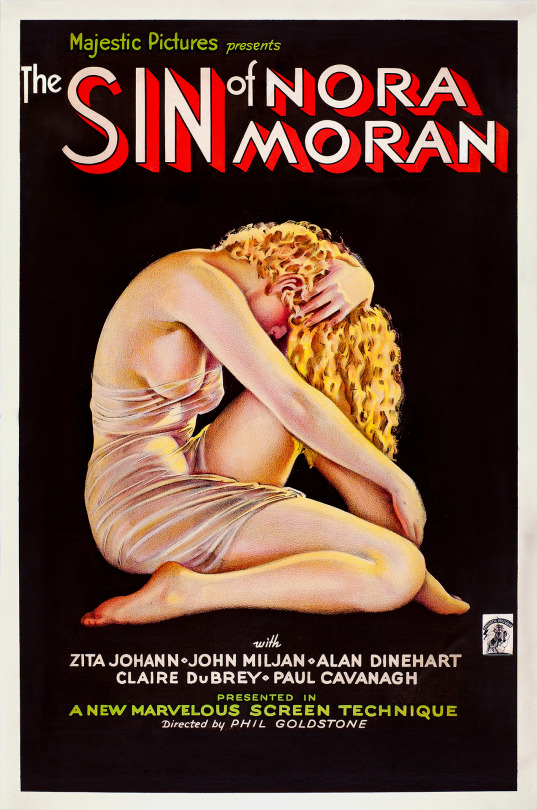
Film poster art by Alberto Vargas for The Sin of Nora Moran, 1933
#alberto vargas#the sin of nora moran#1930s#vintage#film poster#illustration#zita johann#movie poster#vintage movie posters#pre-code#photo restoration
230 notes
·
View notes
Text
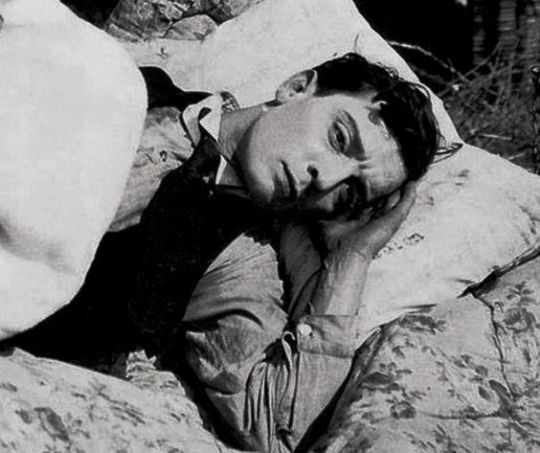
tumblr is literally so much fun why didnt yall get me on this when i was 13 ive really been missing out
Buster Keaton
#buster keaton#1930s#1910s#1920s#1920s hollywood#silent film#silent era#pre code film#vintage hollywood#black and white#buster edit#old hollywood#photo#film photography#film history#tumblr
67 notes
·
View notes
Text

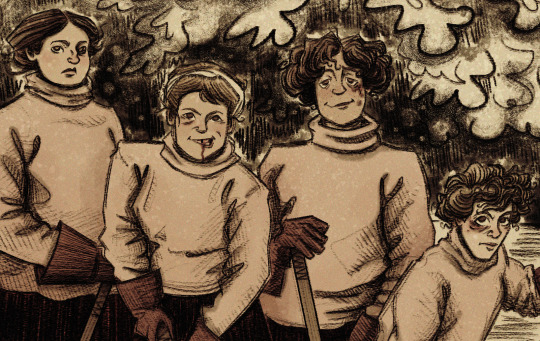
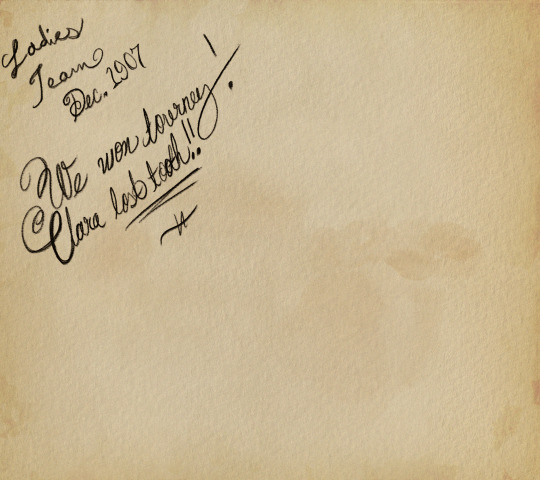
made up a group of edwardian-era hockey girls, Heavily inspired by the many wintery late 19th/early 20th century photos i processed in an archive over the summer. at some point, i decided their team would be called "the hail raisers".
#it's all about texture texture texture#i'm very bad at modeling old handwriting. but just bc i've seen a lot of old handwriting doesn't mean i can replicate it :/#also- technically the vast Vast majority of any photos pre 1930 (that i worked with) were explicitly black and white#but we're gonna pretend this is some super faded autochrome!! which works bc i LOOOOVE autochrome <3<3<3#the things i'm most proud of here are 1) the gloves and 2) the personality shining through each girl#they're bruised and bloody and gap toothed and they're ready for more!#my art#artists on tumblr#edwardian era#edwardian art#hockey#also this is more for me but- gap toothed girl is clara#alma's the formal looking one (with a crooked nose). lenore's looking dazed and confused. and dolores at the bottom right is out for blood#(also i'm preemptively blaming any 'off' proportions on the fact that they're wearing bulky sorta-oversized winter clothes)#(also also- drawing old fashioned hair was fun. they kinda just did whatever as long as it's in a particular shape)#(also also also- i enjoyed drawing injuries. for better or worse i think of 'injuries' whenever i think 'hockey'.#now. would you photograph edwardian-era girls beat up to hell? idk. but check out the 1890s princeton students post-snowball fight photo!)
36 notes
·
View notes
Text

Also ! Beautiful Anna may Wong image .. she is sooooo kitten <3 eyebrows of the century!!?? Amen
#vintage photography#vintage fashion#vintage photo#vintage style#1920s#1930s#old hollywood#anna may wong#pre code cinema#pre code hollywood#pre code film
16 notes
·
View notes
Text

Loosely based on a photo of women from Palestine pre occupation in the 1930s. Palestine was free once and will be free again!!
127 notes
·
View notes
Text
When you think of Eastern European Jewish cuisine, which words come to mind? Light? Healthy? Plant based? Probably not. Heavy, homey and meat-centric are more like it.
Fania Lewando died during the Holocaust, but had she been given the full length of her years, Ashkenazi Jewish cuisine may have taken a turn to the vegetarian side and we might all be eating vegetarian kishke and spinach cutlets in place of brisket.
Lewando is not a household name. In fact, she would have been lost to history had it not been for an unlikely turn of events. Thanks to a serendipitous find, her 1937 work, “The Vilna Vegetarian Cookbook” (“Vegetarish-Dietisher Kokhbukh”in Yiddish), was saved from oblivion and introduced to the 21st century.
Vilna in the 1930s, where Lewando and her husband Lazar made their home, was a cosmopolitan city with a large Jewish population. Today, it is the capital of Lithuania but it was then part of Poland. Lewando opened a vegetarian eatery called The Vegetarian Dietetic Restaurant on the edge of the city’s Jewish quarter. It was a popular spot among both Jews and non-Jews, as well as luminaries of the Yiddish-speaking world. (Even renowned artist Marc Chagall signed the restaurant’s guest book.)
Lewando was a staunch believer in the health benefits of vegetarianism and devoted her professional life to promoting these beliefs. She wrote: “It has long been established by the highest medical authorities that food made from fruit and vegetables is far healthier and more suitable for the human organism than food made from meat.” Plus, she wrote, vegetarianism satisfies the Jewish precept of not killing living creatures.
We know little about her life other than she was born Fania Fiszlewicz in the late 1880s to a Jewish family in northern Poland. She married Lazar Lewando, an egg merchant from what is today Belarus and they eventually made their way to Vilna. They did not have children.
Lewando, to quote Jeffrey Yoskowitz, author of “The Gefilte Manifesto” was “a woman who challenged convention;” a successful entrepreneur, which was a rarity among women of the time. She supervised a kosher vegetarian kitchen on an ocean liner that traveled between Poland and the United States, and gave classes on nutrition to Jewish women in her culinary school.
“The Vilna Vegetarian Cookbook” was sold in Europe and the U.S. in Lewando’s day, but most of the copies were lost or destroyed during the Second World War. In 1995, a couple found a copy of the cookbook at a second-hand book fair in England. They understood the importance of a pre-war, Yiddish-language, vegetarian cookbook written by a woman, so purchased it and sent it to the YIVO Institute’s offices in New York. There, it joined the millions of books, periodicals and photos in YIVO’s archives.
It was discovered again by two women who visited YIVO and were captivated by the book’s contents and colorful artwork. They had it translated from Yiddish to English so it could be enjoyed by a wider audience.
Like many Ashkenazi cooks, salt was Lewando’s spice, butter her flavor and dill her herb. The book is filled with dishes you’d expect: kugels and blintzes and latkes; borscht and many ways to use cabbage. There’s imitation gefilte fish and kishke made from vegetables, breadcrumbs, eggs and butter. Her cholent (a slow-cooked Sabbath stew) recipes are meat-free, including one made with prune, apple, potatoes and butter that is a cross between a stew and a tzimmes.
There are also some surprises.
Did you know it was possible to access tomatoes, eggplants, asparagus, lemons, cranberries, olive oil, Jerusalem artichokes, blueberries and candied orange peel in pre-war Vilna? There’s a French influence, too, such as recipes for mayonnaise Provencal and iles flottante, a meringue-based dessert, and a salad of marinated cornichons with marinated mushrooms.
“It’s hard to know who the target audience was for this cookbook,” said Eve Jochnowitz, its English-language translator. “We know from contemporary memoirs that people in Vilna did not have access to these amazing amounts of butter, cream and eggs,” she said. “Lewando was writing from a somewhat privileged and bourgeois position.” While many of these recipes may have been aspirational given the poverty of the Jews at the time, the cookbook demonstrates that it was possible to obtain these ingredients in Vilna, should one have the resources to do so.
While the cookbook is filled with expensive ingredients, there is also, said Jochnowitz, “a great attention to husbanding one’s resources. She was ahead of her time in the zero-waste movement.” Lewando admonishes her readers to waste nothing. Use the cooking water in which you cooked your vegetables for soup stock. Use the vegetables from the soup stock in other dishes. “Throw nothing out,” she writes in the cookbook’s opening essay. “Everything can be made into food.” Including the liquid from fresh vegetables; Lewando instructed her readers on the art of vitamin drinks and juices, with recipes for Vitamin-Rich Beet Juice and Vitamin-Rich Carrot Juice. “This was very heroic of her,” said Jochnowitz. “There were no juice machines! You make the juice by grating the vegetables and then squeezing the juice out by hand.”
Barbara Kirshenblatt-Gimblett, a Jewish scholar and Jewish cookbook collector, describes Lewando as “witty.” “She is showing us,” she said, “that once you eliminate meat and fish, you still have an enormous range of foods you can prepare.” Lewando is about “being creative, imaginative and innovative both with traditional dishes and with what she is introducing that is remote from the traditional repertoire.” She does that in unexpected ways. Her milchig (dairy) matzah balls, for example, have an elegance and lightness to them. She instructs the reader to make a meringue with egg whites, fold in the yolks, then combine with matzah meal, melted butter and hot water. Her sauerkraut salad includes porcini mushrooms. One of her kugels combines cauliflower, apples, sliced almonds and candied orange peel.
There is much that, through contemporary eyes, is missing in “The Vilna Vegetarian Cookbook.” The recipes do not give step-by-step instructions; rather you will find general directions. Heating instructions are vague, ranging from a “not-too-hot-oven” to a “warm oven” to a “hot oven.” Lewando assumes the reader’s familiarity with the kitchen that today’s cookbook writer would not.
Lewando and her husband were listed in the 1941 census of the Vilna Ghetto but not in the census of 1942. It is believed that they both died or were killed while attempting to escape. “She really was a visionary,” said Jochnowitz. “It is an unbearable tragedy that she did not live to see the future that she predicted and helped to bring about.”But in cooking her recipes, said Yoskowitz, as dated and incomplete as some of them may be, the conversation between then and now continues.
70 notes
·
View notes
Text
福島県
Japanese Prefectures: Tohoku - Fukushima
都道府県 (とどうふけん) - Prefectures of Japan
Learning the kanji and a little bit about each of Japan’s 47 prefectures!
Kanji・漢字
福 フク blessing, fortune
島 しま、トウ island
県 ケン prefecture
東北 とうほく north-east, Tohoku (northernmost six prefectures of Honshu)
Prefectural Capital (県庁所在地) : Fukushima (福島市)

Fukushima is the third largest prefecture of the 47 prefectures of Japan and stretches between the mountainous interior of Northern Honshu to the Pacific Ocean. Like most of the other Tohoku prefectures, Fukushima boasts expansive natural beauty, relaxing hot springs, a rich history, and excellent ski resorts. The feudal Aizu Clan, of the still-standing castle town of Aizu-Wakamatsu, remained loyal to the shogun, even after the shogun was removed from power during the Meiji Restoration. This loyalty led to the Aizu area becoming a battleground of the Boshin War in 1868, where those loyal to the shogun were pushed northwards into Tohoku and Hokkaido as they resisted the reformers and those loyal to the emperor. The Aizu area boasts the post town of Ouchijuku, with buildings retained from the samurai era; Tsuruga Castle; hot springs; and a famous sake brewery.
The March 2011 earthquake and tsunami devastated the coastal areas of Fukushima Prefecture and caused a nuclear accident at the Fukushima Daiichi Nuclear Plant. Tens of thousands of residents were evacuated and a no-entry zone was set up around the nuclear plant. The no-entry zone makes up less than 3% of the prefecture's area, and even inside most of the no-entry zone, radiation levels have declined far below the levels that airplane passengers are exposed to at cruising altitude. Thus Fukushima has been deemed safe for tourists to visit. Wide areas of western Fukushima, in particular, escaped much contamination, including the mountainous interior around the historic city of Aizu-Wakamatsu. And even in most of the eastern parts of the prefecture, radiation levels have by now decreased to pre-2011 levels due to natural decay and decontamination efforts.
Recommended Tourist Spot・おすすめ観光スポット
Ouchijuku - 大内宿

Photo by JR Times
If you want a taste of Edo Period Japan, Ouchijuku is the place for you. This is a former post town along the Aizu-Nishi Kaido trade route, which connected the centers of Aizu (a former castle town to the north in Fukushima) and Nikko (to the south in Tochigi prefecture) during the Edo Period. Restrictions set by the shogunate required travelers to make the journey on foot, and thus post towns such as Ouchijuku developed along the route to provide food, accommodation, and rest. Ouchijuku has been restored to look as it did in the Edo Period, with thatched roof buildings that house a variety of shops, restaurants, and minshuku (small traditional Japanese inns).
The former Honjin, or principal inn for high ranking government officials, is currently a museum, offering an example of elegant traditional housing interiors of the Edo Period and includes a collection of dishes, clothing, and other artifacts.
The Takakura Shrine is a five minute walk off the main path and hosts a unique purification fountain in the midst of a stand of Japanese cedar trees, and was dedicated to Prince Mochihito, who died in June 1180. Near the beginning of the Genpei War (1180-1185) during the Battle of Uji, the prince fled to the Phoenix Hall of the Byōdō-in temple, where he was later captured and killed at the torii gate of Kōmyōsan. It was said that he managed to escape, and hid in Ouchijuku.
Shohoji Temple is located at the end of the main street and up a steep flight of stairs. At the top of the path visitors can enjoy a panoramic view of Ouchijuku and its surroundings.
Regional Cuisine - 郷土料理
Kitakata Ramen - 喜多方ラーメン
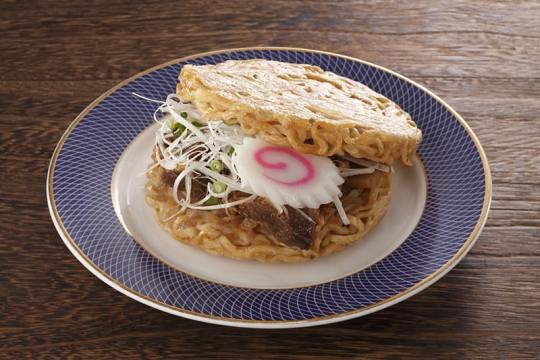
Photo by JR Times
Kitakata ramen is a gourmet specialty from Kitakata, Fukushima prefecture. The origin of these noodles is said to be from Chinese noodles sold in stalls by young people who had come from China from 1920-1930. The noodles are thick and flat with a firm appearance and texture and a relatively high moisture level. The soup is a soy base, with flavors varying depending on the shop, from miso to salt. To determine where to eat, there is a Ramen Map located at the tourist information center in Kitakata.
The popular Kitakata Ramen Burger is made from baked and hardened noodles together with pork, menma, and green onions. Kitakata is also known for its unique culture of eating ramen early in the morning. People who started work very early in the morning at sake breweries and on farms would eat ramen early in the morning, and thus the habit began. "Morning ramen" is available at many shops in the area.
Fukushima Dialect・Fukushima-ben・福島弁
Fukushima-ben or the dialect of Fukushima is similar in some ways to the other Tohoku (or North-East Japan) dialects, but also has some key differences. Here are some interesting phrases I found.
洗濯物をおっこむ (sentakumono o okkomu)
Standard Japanese: 洗濯物を取り込む (sentakumono o torikomu)
English: to take in the laundry
ぶっちめた (bucchimeta)
Standard Japanese: ぶつけた (butsuketa)
English: to hit (e.g. one's head)
すっぺったこっぺった (suppetta koppetta)
Standard Japanese: ごちゃごちゃ言うな (gocha gocha iu na)
English: don't complain about it
うっちしい (ucchishii)
Standard Japanese: うるさい (urusai)
English: noisy, annoying
#japanese prefectures#日本語#japanese#japanese language#japanese langblr#langblr#studyblr#都道府県#福島県#fukushima
85 notes
·
View notes
Text
In memoriam
I spent the last 30 minutes or so skimming through my Tumblr archive from 2011-2012 trying to find a post I know I wrote about my paternal grandparents’ love story, but I couldn’t find it. I probably moved it to another blog at some point and deleted it here. Along the way though I found all these other memories from my early 20s, such as my coming out/confession letter to a best friend from high school, many reblogs of sappy quotes/graphics/book snippets/lyrics, reblogs of photos of places I wanted to visit (many of which I’ve now been to), songs I liked, tech news from the era (like the death of Steve Jobs), political news from the era (like marriage equality, and Barack Obama’s reelection), many reblogs about Glee, my own photos from my early days of living in San Francisco (and interning at Twitter)… All of which is to say, it captured this whole era of my life from ~10 years ago that, in retrospect, was quite pivotal.
The reason I went looking for that post is because I found out yesterday that my grandpa passed away. My dad texted me and tried to call when I was in the middle of a work meeting. I registered the text but didn’t respond, and then called back after. It was the middle of the night in China at the time (around 2am), and he learned the news earlier when my aunt had called him, and she’d been notified by the staff at the seniors home where my grandpa had been living.
As I processed the news and decided on my plans, I told people the context that he had suffered a series of strokes and had been on the decline since last summer, so this news didn’t come as a shock. This is in contrast to my paternal grandma’s passing in January 2022 (also January) from a heart attack which was sudden, quick, and utterly shocking. As the matriarch of our family, her death had hit everyone really hard then.
At his passing, my grandpa was in his late 80s, possibly 87 or 88. Which is objectively quite a remarkable achievement for someone born into the chaos of 1930s war torn China to a poor rural/farming family. He joined the communist army as an accountant/admin, and then the local police after the war, and then worked at the state hemp/cotton company until retirement. He and my grandma met in their 20s, fell in love and got married despite oppositions (this is the story I had posted about that I was looking for), had 2 kids and 2 grandkids (one of which is me), traveled, had health issues and took care of each other, and grew old together.
I realized yesterday that I wasn’t reacting as emotionally as I did to my grandma’s passing — one because he’d been on the decline, and my dad/aunt thought he almost wasn’t going to make it after his last severe stroke in July. I think I had emotionally prepared for this back then, and so expected this to happen at some point. The other reason is that his quality of life in this last year, after these strokes, had become quite poor. He couldn’t eat or talk or walk, and had become reduced to almost just skin and bones. It had become painful to see him in this state, and I’m glad he’s not suffering anymore.
However, at the same time I still feel sad and regretful because I was hoping to see him at least one more time. Even though he hasn’t been able to speak since July, and he didn’t really recognize anyone anymore… even so, I was hoping he'd hang on until I visited again.
When my grandma passed in 2022, the pandemic, travel restrictions, and lack of flight options had made it virtually impossible to travel back. The last time I visited China was October 2019. Since then, in the last few years when we called, they’d almost always ask when I can go back again. My grandpa did this all the way up until his last stroke in July when he couldn’t speak anymore. When the pandemic largely ended in 2022, I’d always say “soon”, even knowing it was impractical with the Chinese government's onerous visa policies. When they finally reinstated the pre-pandemic visitor visa policies in March 2023, I started to say that I'll go back during the summer, then the fall, then the winter, then the spring. One reason is that the flight options were both expensive and inconvenient, but the larger reason is that I prioritized other plans in my life. I'm not sure where I could've squeezed it in, but I do regret that I didn’t try harder to visit sooner.
Circling back on the whole “eras of my life” thread — I always felt like as long as my grandparents were around, I still feel like a kid in some way. They treated me like one, still babied me whenever I visited or called, and would remind me of funny anecdotes from my childhood. I know I’m pretty lucky to have gotten 30+ years with almost all 4 grandparents in my life. I also know I’m lucky that they loved me as much as they did — because not all of my friends had the kind of close relationships I did/do with their grandparents.
Growing up, I was always pretty close to my grandparents, more so to my grandma who I genuinely enjoyed talking to and would call regularly, but I have many fond memories with my grandpa too.
I recall when my family first immigrated to Canada, I would cry about missing them. Later when I went back to visit as a teenager, I would cry on the flight back to Canada.
My grandpa liked to write simple rhyming poems after he retired, liked to drink and smoke and only quit in his 60s, and liked to sing Chinese opera. One year for my birthday, he wrote a “hidden message” poem where the first word of each verse added together would say “happy birthday <my Chinese name>”.
One really special memory of him I have is when I was in kindergarten, and during afternoon nap time (which I hated) he showed up unexpectedly and took me out of school. We didn’t live in the same city but he was in my city for a work trip, and he’d decided to take me out of kindergarten early that day so we could spend time together. I remember it feeling so unexpectedly awesome — one because I was doing something I wasn’t supposed to (skip school) but also because of the surprise visit itself.
The only time I felt emotional yesterday was when my mom told me how, even though I won’t be able to attend the funeral, I could pay my respects at both of my grandparents’ gravesites when I visit. The thought made me emotional because… they can finally be reunited again, or at least not be separated by death.
Didn’t really know what I was going to write when I started this, and the words kept pouring out, but I’m glad I did.


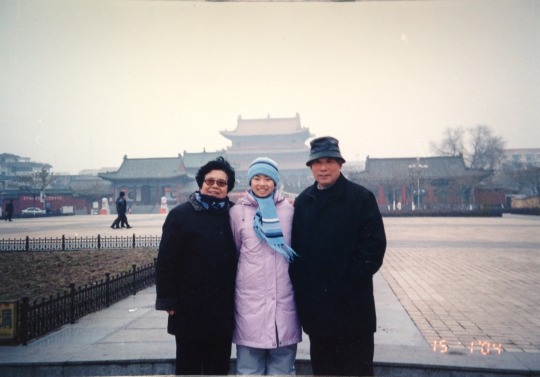





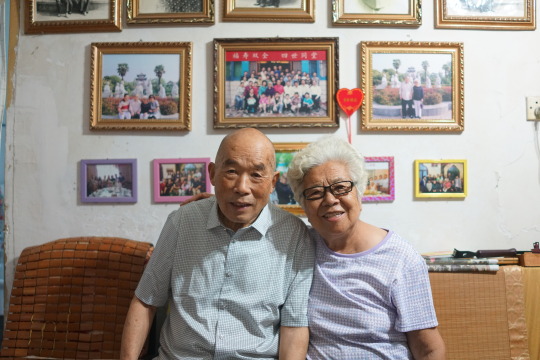
23 notes
·
View notes
Text
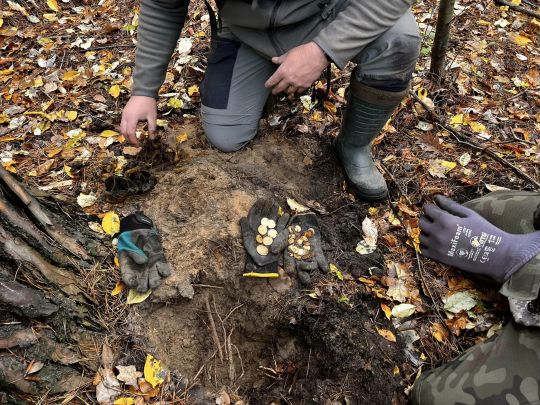
Treasure Hoard of American and Russian Gold Coins Found in Polish Forest
A trio of metal detectorists ventured into a forest in Poland for what they expected to be a standard search for leftovers from World War II. Some buttons. Other discarded items. Maybe a few coins.
Instead, they stumbled on a mysterious gold treasure.
Łukasz Istelski and two others from the Szczecin Exploration Group Association used metal detectors to search a wooded area near Szczecin, Istelski told the Polish Press Agency in a Nov. 7 news release from Science in Poland.
Istelski heard one of his friends shouting about a discovery and went over, he said in the release.


Buried about 6 to 8 inches down, they found a corroded metal can. The can easily broke apart and out poured dozens of gold coins, Istelski said.
Photos shared by the Szczecin Exploration Group Association in a Nov. 5 Facebook post show the gold coins next to a hole at the base of a tree. The coins look shiny and relatively well preserved.
Istelski told Science in Poland that the discovery was a dream come true. The group’s Facebook post said the emotions were indescribable.
The treasure stash had 70 gold coins identified as U.S. dollars and rubles worth about $24,000, officials said. A photo shows the gold coins laid out on a table.
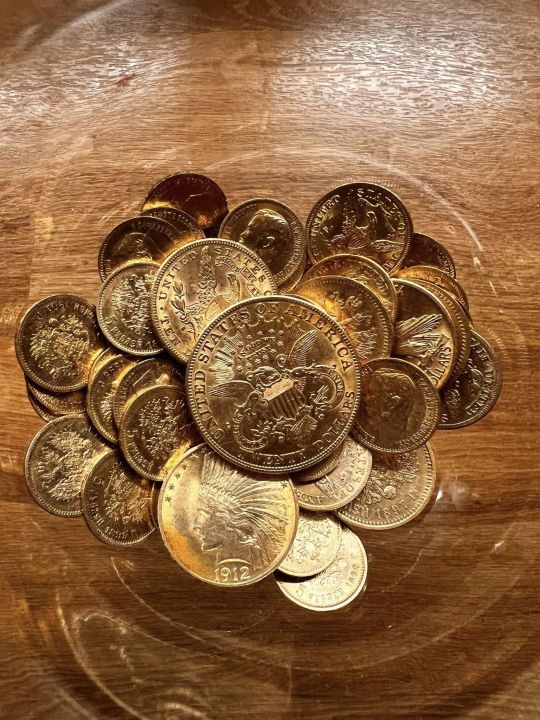

The cache weighed about 14 ounces and included $5, $10 and $20 coins as well as 5 and 15 ruble coins, the Facebook post said.
The U.S. government made several different gold coins between 1795 and 1933, according to an article by the United States Mint. These included a $2.50 quarter eagle coin, $5 half eagle coin, $10 eagle coin and $20 double eagle coin.
These pre-1933 gold coins are “actually quite scarce,” according to the American Gold Exchange. “Of the many millions originally minted, almost all were heavily used in circulation during the 1800s and early 1900s, and many were melted down during the federal gold recall in the 1930s. Only a small fraction of the original mintage survives today,” the exchange said.


Close-up photos show a $20 gold coin from 1903. The front has a profile view of what appears to be Lady Liberty and the year. The back has the denomination of $20, eagle crest and iconic phrases of “In God We Trust” and “E Pluribus Unum.”
Officials don’t know how the cache of gold coins came to be buried in the forest. Istelski suspects it’s related to war activities, but the treasure remains mysterious.
The treasure will be given to the district government, officials said.
Szczecin is in northwestern Poland, near the border with Germany, and about 350 miles northwest of Warsaw, the capital city.

#Treasure Hoard of American and Russian Gold Coins Found in Polish Forest#metal detecting#treausre#gold#gold coins#collectable coins#ancient artifacts#archeology#archeolgst#history#history news
29 notes
·
View notes
Text
by Ben Cohen
One of Canada’s leading French-language news outlets abruptly removed a crudely antisemitic caricature of Israeli Prime Minister Benjamin Netanyahu from its website on Wednesday morning following a storm of protest from Canadian politicians and Jewish advocates.
The image, drawn by veteran cartoonist Serge Chapleau — who has won several awards for his work and was honored with the Order of Canada medal in 2015 — was published by the Montreal-based newspaper La Presse and appeared on the front page of its print edition. It showed Netanyahu as Nosferatu, the titular character of a classic 1922 German Expressionist silent movie about a blood-sucking vampire, Count Orlok, who preys upon a real estate agent and his wife under the cover of purchasing a house and who, later in the film, unleashes a plague of rats onboard a ship on which he is traveling. The film is based on the famous 1897 novel Dracula, set in Romania.
Chapleau’s cartoon imposed Netanyahu’s features on that of a vampire wearing a grim, lifeless expression, with his hands replaced by long claws. An accompanying text displayed the word “Nosfenyahou” — a contraction of “Nosferatu” and the Francophone spelling of Netanyahu’s last name — dripping with blood. Another text beneath declared “On the way to Rafah,” the city in Gaza where Israeli troops have been battling Hamas terrorists.
Historically, antisemitic caricatures of Jews frequently depicted them as blood-suckers, building on earlier Christian libels that falsely accused Jews of using the blood of Christians in their religious rituals. Since the Oct. 7 Hamas pogrom in Israel, the same motif has appeared across the Arab world in relation to Israel’s war against Hamas in Gaza, with news outlets in Morocco, Jordan, and Qatar all publishing cartoons of Netanyahu drinking the blood and consuming the flesh of Israel’s adversaries.
By the middle of Wednesday morning, La Presse had removed its contribution to the genre following widespread protests on social media. However, the paper has not apologized for the offending image nor offered an explanation as to why it was published to the 860,000 followers of its feed on X/Twitter.
“No big deal, just the second-largest newspaper in French Canada caricaturing Jews as vampires,” David Frum — a Canadian-American writer and former speechwriter for US President George W. Bush — remarked in a post. Frum added: “That’s how antisemitism often works. A rich inventory of anti-Jewish images and themes pre-exists: the Jew as bloodsucker, the Jew as child-killer, the Jew as alien enemy. When a user wants to vent rage or dislike … the resource accumulated over centuries is waiting for him.”
Canadian politicians who condemned the cartoon included Quebec Senator Leo Housakos, who said he had been “appalled” by it.
“While Mr. Netanyahu, as with any politician, is not above criticism, this kind of antisemitic trope is reminiscent of the 1930s. I’m saddened for Jews across Canada for the level of hate to which we, as Canadians, have co-signed,” Housakos’ X/Twitter post continued.
17 notes
·
View notes
Text
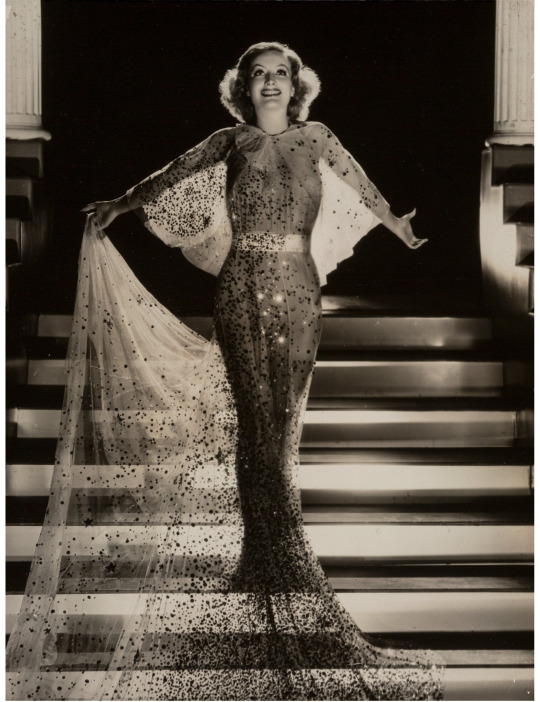
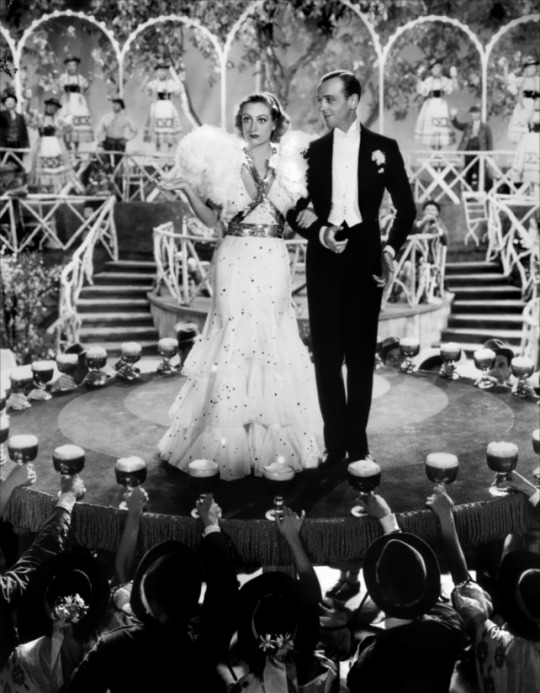
One Dress a Day Challenge
February: Coeli's Monochrome Picks
Dancing Lady / Joan Crawford as Janie "Duchess" Barlow
It's always weird to me to remember that Joan Crawford was in musicals. Even weirder to remember that Fred Astaire's screen debut was with her!
I particularly like the gown in the bottom photo; it's pure distilled 1930s, with the ruffled skirt and the broad, feathered shoulder silhouette. The backlit effect in the top photo is interesting and makes it look like the dress is nearly transparent; but I suppose even in the pre-code era, they wouldn't go that far...
Just found another photo. Never mind.

#dancing lady#coeli's picks#joan crawford#one dress a day challenge#one dress a week challenge#movie costumes#1933 movies#1933 films#1930s fashion#1930s style#30s fashion#30s style#pre code#pre code hollywood#pre code era#pre code films#pre code movies#black and white movies#black and white films#old hollywood
11 notes
·
View notes
Text
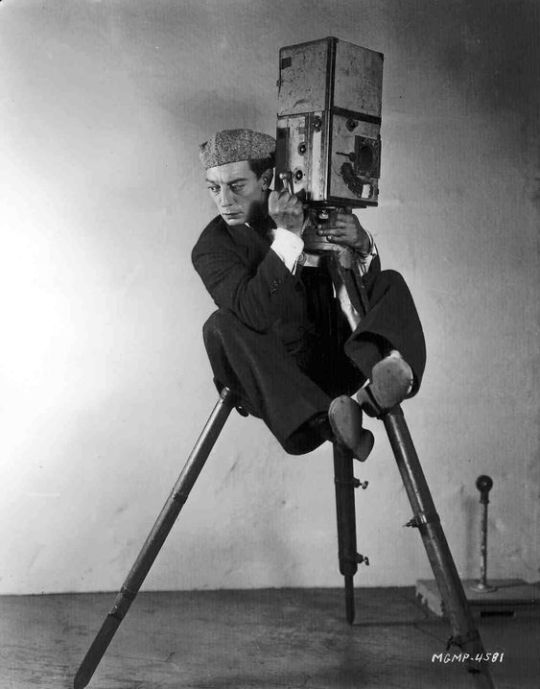
do you think they told him to do that or he just did it on his own
Buster Keaton's photo session with camera for the promotion of The Cameraman (July 28, 1928)
#he's so kawaii#buster keaton#1930s#1910s#1920s#1920s hollywood#silent film#silent era#pre code film#vintage hollywood#black and white#buster edit#old hollywood#photo#film photography#the cameraman#history#film history#william dafoe
30 notes
·
View notes
Photo

Since Trotsky came to Mexico I have understood his error. I was never a Trotskyist.
- Frida Kahlo
In the summer of 1940, Frida Kahlo found herself in jail. Mexico City police suspected her as an accomplice in the murder of the embattled Russian revolutionary Leon Trotsky. Several days prior to her arrest, he’d been gruesomely offed with an ice pick. His murder - and her implication in the crime - was a dramatic turn of events, especially considering that Kahlo and Trotsky had been giddy lovers just three years earlier; she’d even dedicated a striking self-portrait to him.
Kahlo had many romantic partners over the course of her short life (she died in 1954 at 47), but few resulted in dedicated paintings—and fewer pointed explicitly to her political beliefs. The liaison with Trotsky did both. Although their romance only lasted several months, it offers a window into Kahlo’s politics and how deeply they influenced her work.
Kahlo and Trotsky first met in 1937, when the painter was 29 and the politician was 57. Kahlo and her husband, muralist Diego Rivera, were vocal supporters of Marxism and had been on-and-off members of the Mexican Communist Party for a decade, since 1927. Influenced by the Mexican Revolution at the turn of the century, they advocated for a populist government and believed political power should rest in the hands of the working class.
By the mid-1930s, Kahlo and Rivera both considered themselves Trotskyites. They’d followed the Russian Revolution and the rise of Communism closely, and knew Trotsky as a hero of the 1917 October Uprising, which cemented Vladimir Lenin and the Socialist regime’s rise to dominance. But when Joseph Stalin assumed leadership in 1924, he consolidated power and demoted Trotsky, exiling him for good in 1929. As a result, the Communist party fractured into two main camps: Stalinists and Trotskyites.
It was Rivera who convinced Mexican President Lázaro Cárdenas to offer Trotsky political asylum in Mexico. After several years in Turkey, France, and Norway, Trotsky and his wife Natalia Sedova boarded an oil tanker and docked in Tampico, Mexico on January 9, 1937. Rivera was sick, so Kahlo greeted them at the port, along with a troop of armed guards.
Kahlo and Rivera offered the Trotskys their second home, the now famed Casa Azul, equipping it with guards, barricades, covered windows, and alarm systems to ensure their political hero’s safety. Sedova recalled the beginnings of the trip fondly in a letter to friends: “We were breathing purified air…A motorcar…carried us across the fields of palms and cacti to the suburbs of Mexico City; a blue house, a patio filled with plants, airy rooms, collections of Pre-Columbian art, paintings from all over: we were on a new planet, in Rivera’s house.”
It wasn’t long after the Russian couple settled in that a romance developed between Kahlo and Trotsky. The politician’s secretary, Jean van Heijenoort, remembered the pair’s blatant flirtations under the nose of Trotsky’s wife. Sedova didn’t understand English, the language in which the lovers communicated. They met clandestinely at Kahlo’s sister’s house, and Trotsky slipped love notes into books he lent her. Kahlo and Trotsky’s meek attempts at discretion didn’t prevent Sedova from discovering the affair. She gave her husband a “me-or-her ultimatum. It seems that Kahlo tired of the romance around the same time. Despite their split, the two remained friends for some time until Trotsky’s murder.
Photo: Russian revolutionary Leon Trotsky (right), Mexican artist Frida Kahlo (centre), and revolutionary and wife of Trotsky Natalia Sedova, photographed Together In Mexico In 1937.
#leon trotsky#trotsky#frida kahlo#kahlo#art#artist#marxist#communism#comunnist#mexico#russia#revolutionary#relationship#diego rivera#history#stalin#russian revolution#bolshevik#arts#society#politics
165 notes
·
View notes
Text

a photo of the destroyed film reels after the 1937 fox vault fire. the fire completely eliminated 75% of all silent films made by fox pre-1930
112 notes
·
View notes
Text
Breaking down the comics: Going Home.
Moon Knight, Issue #14: Stained Glass Scarlet
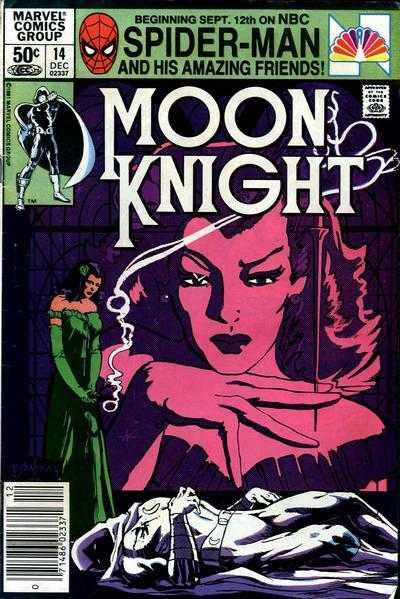
OH BOY OH BOY.
Just…Take a minute to appreciate this art:
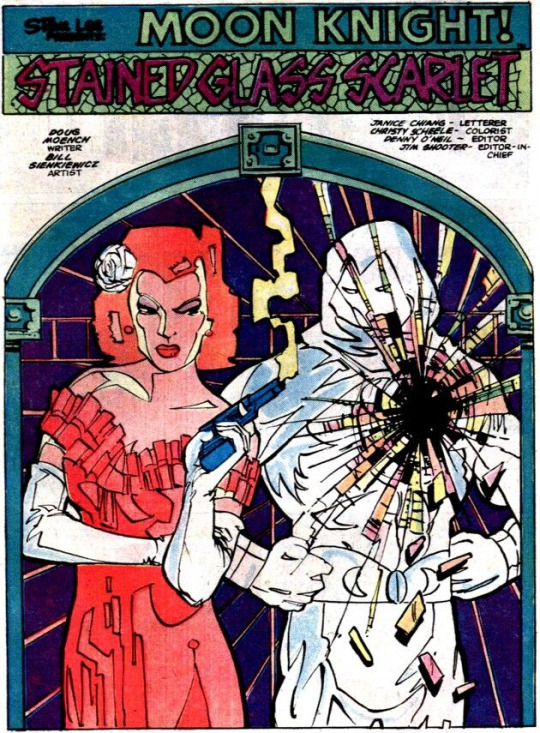
Damn that’s beautiful!
Okay everyone!
Here's a bit of rogue history for you! Especially since Scarlet showed up in a recent run!
Her story is a sad one.
The story starts in an abandoned church. A story of forgotten worship, run down and empty pews, infested sanctuary, and empty promises of atonement.
"But high above the corruption, just under the church's vaulted roof in what was once the attic, there is a place of melancholy comfort... If not sanctuary.
It is here that Scarlet-- Stained Glass Scarlet-- has lived for the past three years, quiet as languid smoke, unknown by the crumbling world outside."
Damn fine narration as always, Moench.
And damn fine art.

She carries out a lonely routine. Playing on the silent ruined Organ, gazing at the vast empty space and far away stars, playing pre-recorded chess games, and at last looking through her old photo album.
"And each piece of the past is like a shard of stained glass... But all of them, even glimpsed together never adding up to a window with a clear view."
She looks at pictures of her first communion. Her wedding. Her baby.
The album ends in a newspaper clipping "Joe 'Mad Dog' Fasinera escapes prison. Guard killed in break."
Cut to a vastly different location. "A fortress of wealth and security...Sanctuary."
We are at Grant Mansion.
Here we see Steven and Marlene sharing a moment.
Marelene remarks that they really are lucky.
"[...] Referring to you, to the change you've accomplished. Going from a conscienceless mercenary to a man like Moon Knight is no light-"
"Yes... well, if it's the miraculous redemption of my spirit we're talking about-"
They sit together and look at a collected work of "Alphonse Mucha."
You have to understand something about comics. When they show you a book with a title or author, it has a purpose.
You are supposed to recognize the name or title and understand that it will have an impact on the story later.
So...
Alphonse Mucha. Who is that?
He's a Czech painter/illustrator/graphic artist from the art Nouveau period.
He did this:

Yeah. THAT. You've seen his work. You'll also notice that the second cover image has a similar style.
He also did this stained glass art piece in the :
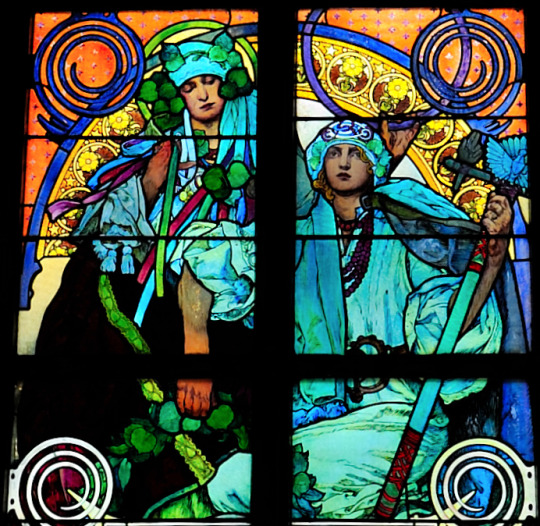
He loved his country of Czechoslovakia and did many works celebrating the slavic people and the independence of his country... in 1920s-1930.
Yeah... You see where this is going if you know your history.
When Hitler invaded and took over Czechoslovakia, Mucha was captured as a nationalist and severely interrogated for many days. When he was released, he was in poor health. He contracted pneumonia and died a month before the outbreak of WWII.
Check out his art, it's beautiful.
You should also keep in mind that The Spectors are also from Czechoslovakia.
"The clerk in Rizzoli's said he's seen the originals of these--ten feet tall, almost like stained glass windows--hanging in belgium."
So Steven bought this book.
Why? Sure, he's about being rich and living the high light. In earlier issues (particularly the one with Mogart) he had shown an interest in art.
But why this one?
Marlene goes to the piano and starts to play "In My Life" by the Beatles.
Wait, when did this comic come out?
December 1981.
Ahhhh. The one year anniversary of the death of John Lennon.
Sometimes comics cover world events and note how they affect others.
We see them cry and hug.
"The dream is over. John Lennon is dead. [....] Guns. And guilt."
We cut to Scarlet, listening to the news on the radio.
It talks about gunfire in the Bronx attributed to the 'Mad Dog' Fasinera, the escaped convict.
The radio goes on about Mad Dog going on a murder spree.
Scarlet sheds some tears.
Back at the mansion, Steven also hears about the shootings. He runs to get ready as Moon Knight.
We cut to Mad Dog in a shoot out. He talks about revenge for his father and getting his father's money. He's going ot 'cut the old neighborhood to ribbons'.
We see Moon Knight on the roof getting into the chopper.
"Don't worry about it, Lady- Grant'll be back."
"Who will be back, Steven?"
"Okay, Already. I'LL be back."
Again, we see the push by Marlene to have them all be Steven and the push back and frustration.
Marlene still at this point thinks they are pretending to be someone else and she wants them all to just be Steven.
Scarlet also cloaks up in her signature red outfit and heads out into the night.
Moon Knight fights the Mad Dog and his gang shooting up a store. He busts in and breaks it up, taking down a few while the others get away.
He follows them to an abandoned grocery store and sees Scarlet standing outside.
She goes inside and finds the rest of Mad Dog's gang, but no Mad Dog. She demands to know where Joe 'Mad Dog' is.
She tells them that when they see Joe to tell him 'What he's looking for is in the church." She then leaves.
Moon Knight follows her back to the church and confronts her.
She tells him her story.
Joe is her son!
"I was young, Moon Knight, in love with the idea of being in love..."
She talks about how Joe was the result and consequence of her love. Now, she means to 'salvage' the consequences and save Joe.
When she was much younger, she wanted to be an actress or a nun. She chose the role of being a nun.
Once she was a nun, she realized that she was only acting and regretted her choice.
She realized this when she met a man named "Vince". Vine had just stolen a lot of money and run to the church out of guilt.
She helped him and 6 months later she married him and left the church.
"Instead, I devoted myself to my husband, hoping I could help him change, hoping I could use my own failure to redeem him... The baby came and I named him Joseph... But Vince never came to the hospital once. I had to take a cab home."
After 15 years, she realized that this too was just a 'role'. Vince robbed a bank and killed the guard. He stashed the money and got in a shoot out with the police, who killed him in front of the church.
When Joe heard his father was killed, he 'declared war on law and order."
By 19 he had killed someone and left home. He went to jail for life.
When her son went to jail, she moved to the church. "Jut to play another role, the fallen woman turned mad hemit."
Moon Knight asks her why the church.
"Just before the police caught up to him, Vince told a friend that he was going to hide the bank money in a special place where he 'pulled an angel straight down from heaven'."
She moved to the church knowing that her son would eventually come looking for the money.
Joe makes a draatic entrance and demands to know where the money is.
She begs him to stop. To give up and turn himself in.
Moon Knight gets shot in a scuffel and Scarlet shoots Joe.
Joe staggers and accidentally grabs the church bell rope. As he falls, all the hidden money falls down with him.
Scarlet stands over her dead son.
"Thomas Wolfe's Maudlin line is true, Moon Knight... You never can go home again. Once you've turned your back on it... It's gone. Forever."
(A very hard and true statement. I wonder if it hit home for Marc too. A man that ran from home and turned his back on everything. Had he ever tried to go home? Or was he still running?)
Scarlet disappears into the night. Moon Knight stands over the discarded gun. “Guns…” Lamenting on how easily they take and destroy. Much like the death of John Lennon. An idea that is killed.
Moon Knight returns back to the mansion, wounded but alive.
"Some succeed in their chosen mission. Others fail, no matter how hard they try."
That is the end of the issue, but not the last time we will see Stained Glass Scarlet.
I’ll cover each of her appearances, but this is a Moon Knight Villain that I always did enjoy.
So what about the artist? Alphonse Mucha is best known for his Art Nouveau period, but it wasn’t what he wanted to be known for.
For him, he loved his home. He loved his little country that had fought and struggled to become whole. One of his final pieces was about his own people. “History of the Slav”. It depicted his people’s struggles to survive and build their country.
It was put in a museum for a bit then rolled up and put into storage.
Now and then it is pulled out and shown in Prague, but not for long or often. His country was then invaded and torn apart over and over again. He died as it was on the brink.
Again, we have to remember that the Spectors are from Czech. While Mucha was devoutly Catholic and did a lot of work that went to the churches, he wasn’t openly recognized for a lot of it. He was most famous for the work he did in Paris.
Scarlet tried to find herself and found herself in role after role, pretending to be happy and not finding herself. Her legacy becomes her failure to save her husband and then her son, born from her misguided attempt to find her purpose. She then kills that legacy.
It’s odd in this comic how Moon Knight really doesn’t have much of a role in it. We focus on Mucha, John Lennon, and Scarlet.
The bits we do see of Moon Knight are him looking into an artist from Czech who left a legacy he didn’t want. Him lamenting over the senseless killing of a man that meant so much to a lot of people. And him hearing the story of a woman trapped in finding her meaning and her past.
It’s one of those issues that leaves you feeling like you are taking a peak behind a curtain but can’t quite see the full picture. It also leaves you wondering.
And later, much later, in recent issues, when we see the remains of Scarlet, there is a sadness there. A bit of the past that Moon Knight could never let go of. And we’ll see more of that later when she shows up again.
#Moon Knight#Moon Knight Comics#Moon Knight meta#Analyzing the comics#Marc Spector#Steven Grant#Jake Lockley#Stained Glass Scarlet#Moon Knight's rouge gallery#For everyone that had no idea what that new Stained Glass Scarlet episode really was about#I want more than anything to dive into the idea of Steven wanting to know his past#I want Steven to research his own people#I want Marc to talk about going home#I want Jake to touch on the fact that he has built his own people because he has none#I'm not normal about Moon Knight#I love Stained Glass Scarlet#She always makes Moon Knight pause and reflect#He lets her get away
22 notes
·
View notes
Photo



Cosplay the Classics: Lucille Ball in the 1940s
The first time I ever saw Lucille Ball not playing Lucy Ricardo was when TCM aired Du Barry Was a Lady (1943) when I was a kid. She floored me in this movie. This woman that had branded herself on my brain via sitcom reruns as an expert comedian and legendary face puller was also this knockout glamour girl?! And it’s not that Lucy is gorgeous, I already knew that, it’s that the film treats her as such. She’s lit like a goddess and that raging technicolor photography was a match made in heaven with her red hair and bright blue eyes. Since then, I’ve had the pleasure of seeing a lot more of her film work pre-I Love Lucy, including one of my all-time favorite movies, Dance, Girl, Dance (1940).
Ball might best be known now for her masterful work in television, as a performer and a producer, but boy her journey to get there was nothing to sniff at. Ball gradually carved out her niche in pictures by the end of 1930s, when she had already been in show business for the better part of a decade. Not fully satisfied with her work in film, Ball did double duty and heavily delved into radio. Between her radio work and her growing roles in pictures, she became the newest “Queen of the Bs.” (“B” referring to B pictures, lower budget films that were typically the second feature in the double features.)

Lucy’s styling progression from the 1930s through the early 1940s
The type Ball most excelled at playing was brassy and headstrong with a penchant for banter that usually relied at least a bit on her comedic timing. The physical comedy we now know Ball excelled at is only present in fits and starts across her filmography of the 30s and 40s. Regardless, she is fantastic at delivering repartee, even when it’s not very well written.
Looking back from this side of decades of I Love Lucy continuously playing on our TVs (at least in the US), I get the feeling that lots of people might be unaware that Ball got her start in entertainment for her looks. (And that her acting and comedy skills came from diligent work!) She started as a fashion model and was a spokesmodel for Max Factor Cosmetics starting in the 1930s. Ball got her break as a Goldwyn Girl because she had the right look and good timing.
Reviewing her filmography to research this cosplay, the time around 1940 stood out as a turning point for her career (and, in turn, her look). Generally speaking in studio-era Hollywood, you knew you had made it when you became the type to cast rather than fitting the type of some other, more established star. And, when you became your own type, that was usually accompanied by a styling shift that emphasized your own features over adjusting your features to emulate another star. To illustrate, here are photos of Lucille Ball, Joan Bennett and Ginger Rogers taken when they were all working at RKO in the 1930s, alongside photos of them in the early 1940s, when they were all on their own paths. Ginger was a rising star for the studio in the 1930s, so hers became a dominant look. (An added note for Lucy’s career at the time, is that she was mentored by Rogers’ mother Lela at RKO.)

Ball, Bennett, and Rogers above in the 1930s and below in the 1940s
This cosplay was roughly based on Ball’s signature styling in the mid-1940s, specifically around the time she made the film Lured (1947). (A movie which I feel could have easily spawned a series.) By this point she was settled into the hair and make-up we typically associate with Lucille Ball. Her eyebrows are a relatively thick, rounded arch and generally the roundness of her eyes is accentuated, instead of trying to elongate them. Her coppery curls are arranged around the center of her forehead with hair swept up at the temples. Her lipstick is applied in a manner that leans into the fullness of her lips while also emphasizing her slightly dubious expression. While I’ll admit a lot of these styling shifts correspond with beauty trend shifts from the 1930s into the 1940s, the execution of the trends are tailored to her unlike the '30s trends, as illustrated above.
By the time Du Barry was released in 1943, Ball’s red hair was already a selling point (though it was dyed much brighter for the sake of the technicolor). Her typical hair and makeup by the time Lured came out in 1947 only changed marginally from then through the 1950s. That is to say, even updating her look with trends like shorter, tighter cuts for women’s hair and stronger contrasting lines for make-up of the 1950s, Ball found the shapes that suited her and she stuck with them. It’s a beauty paradigm that makes her a joy to emulate, even on the closet-cosplay level I operate on!

The references I used to put this cosplay together can be seen below:

I also got a little bored at the prospect of editing these images, so I tried to replicate the photographic look of full-color portraits from 1940s fan magazines. Most notably, this photo of Janet Blair from the September 1943 issue of Modern Screen Magazine:

----
AND, if you want to read more about Lured, I wrote about it a few years back for Noirvember!
OR, if you want to read more about Joan Bennett, I cosplayed her a while back!
#Lucille Ball#cosplay#closet cosplay#cosplayers of tumblr#cosplay the classics#1940s#old hollywood#Old Movies#classic film#classic movies#lured#du barry was a lady#1930s#RKO#joan bennett#ginger rogers#film#movies#movie stars#film stars
134 notes
·
View notes